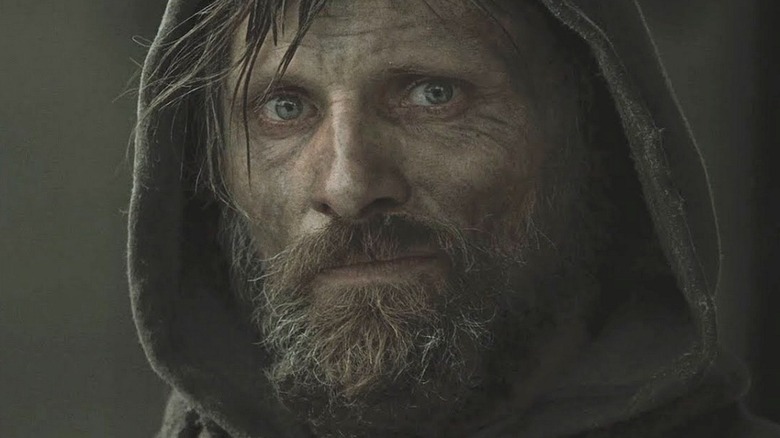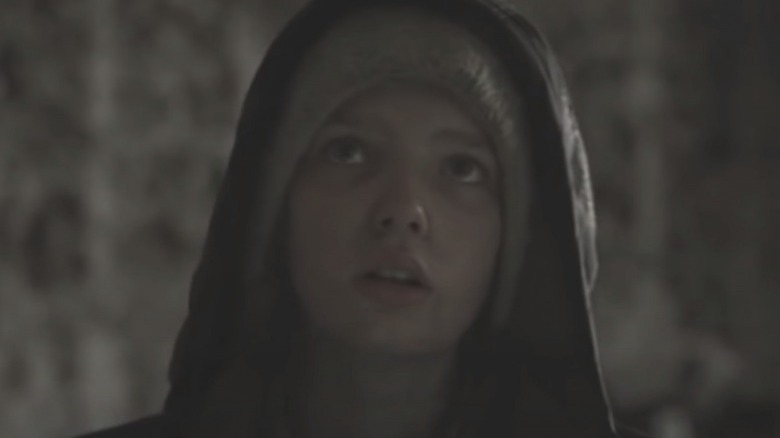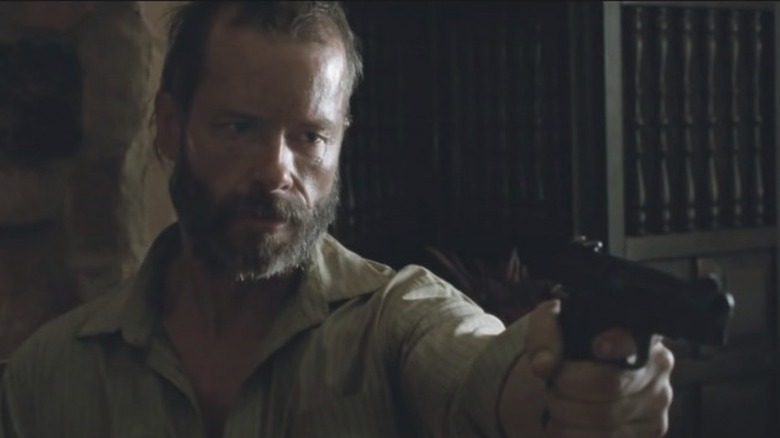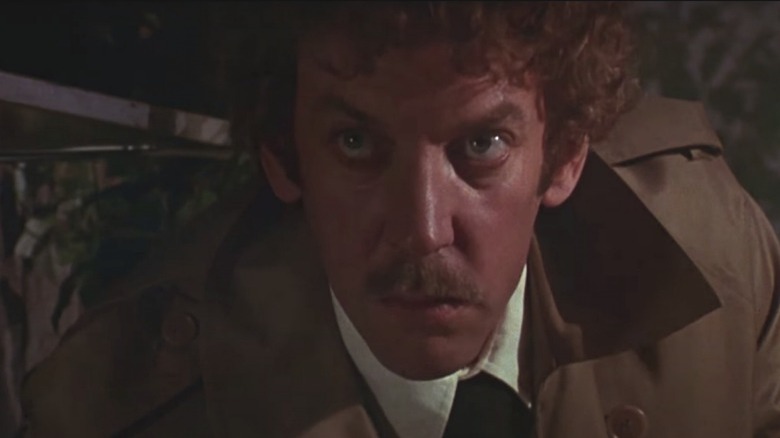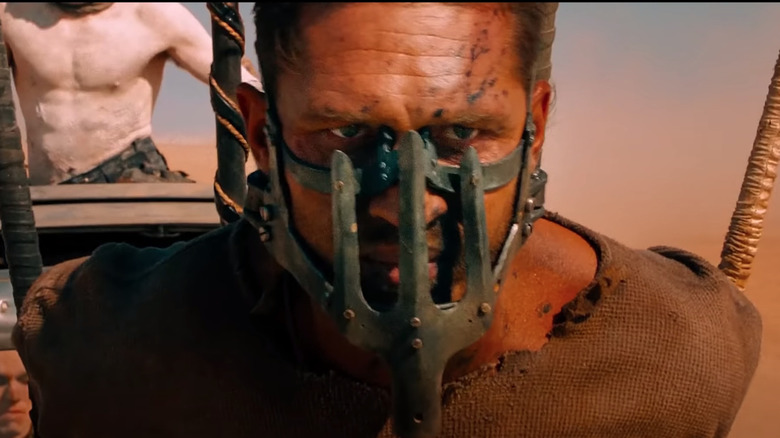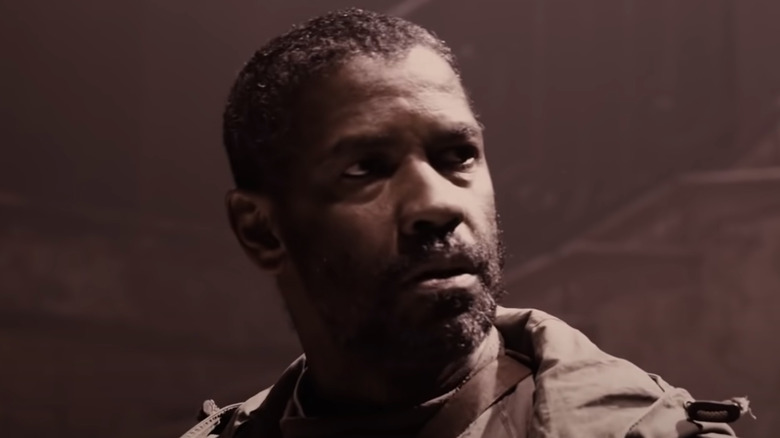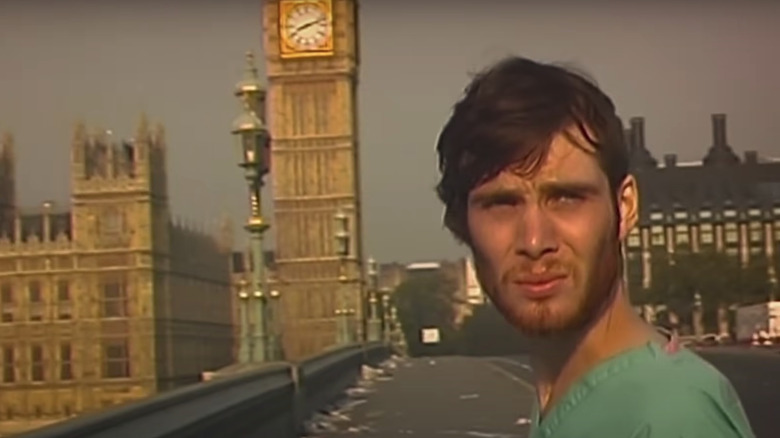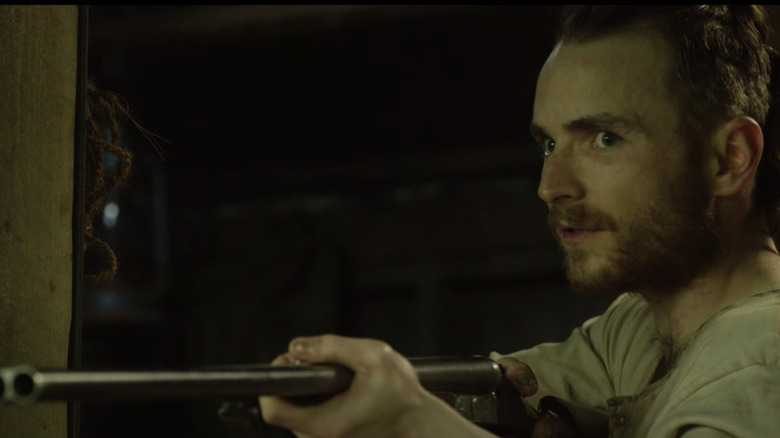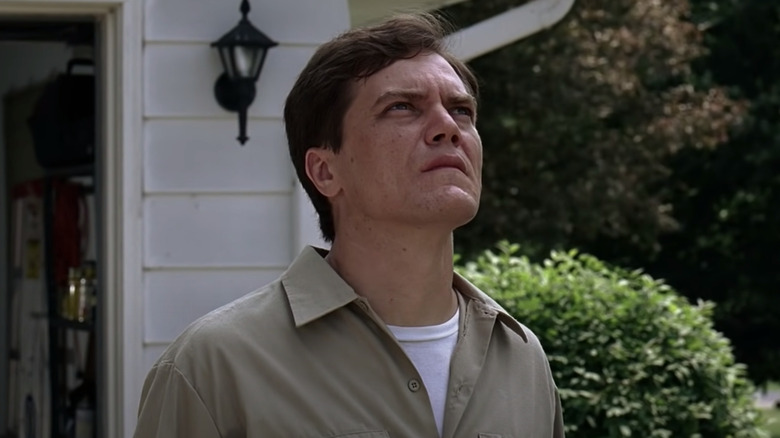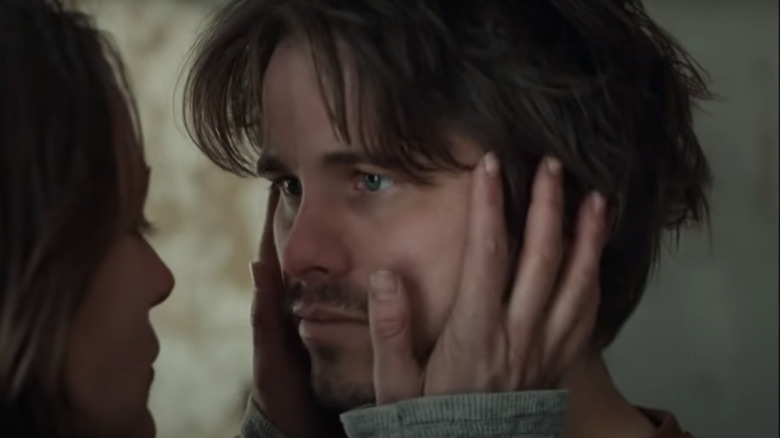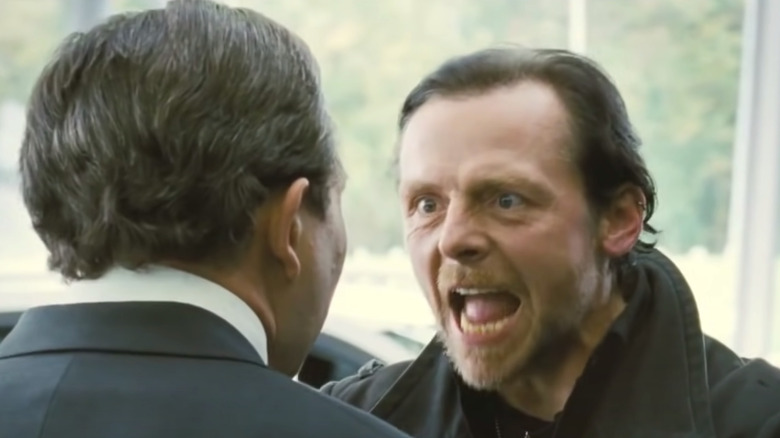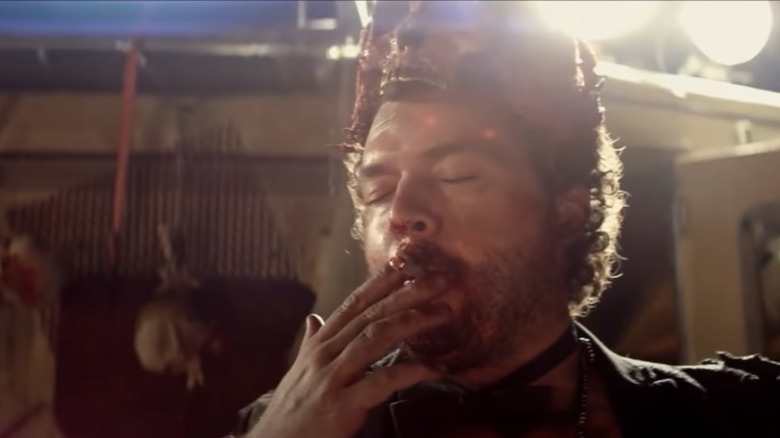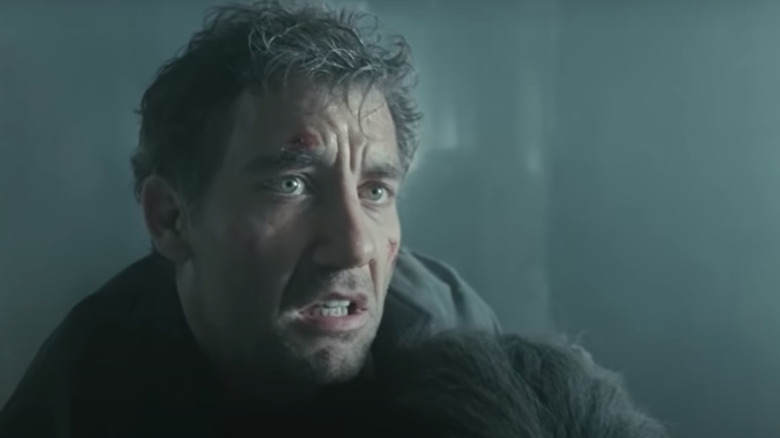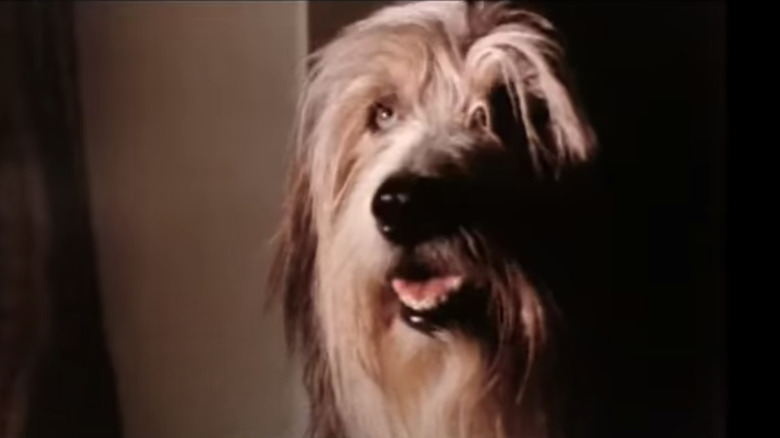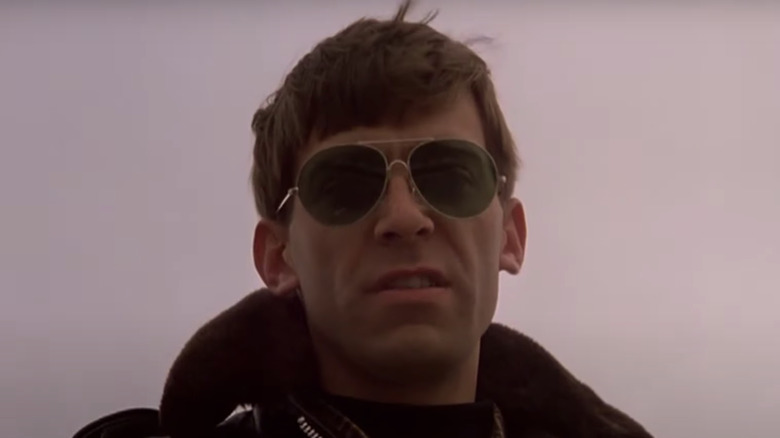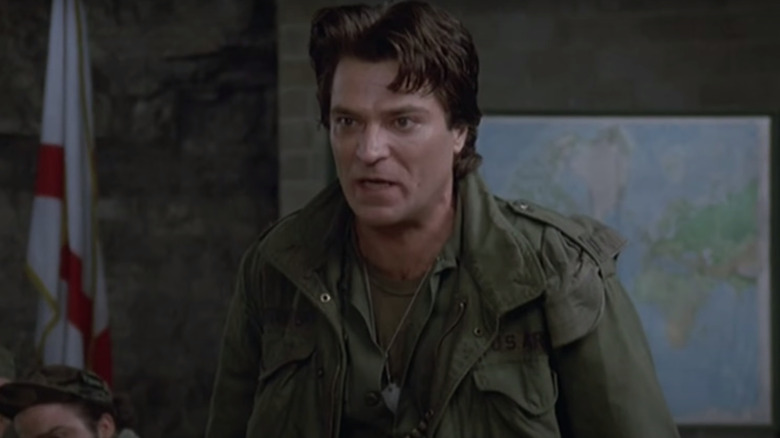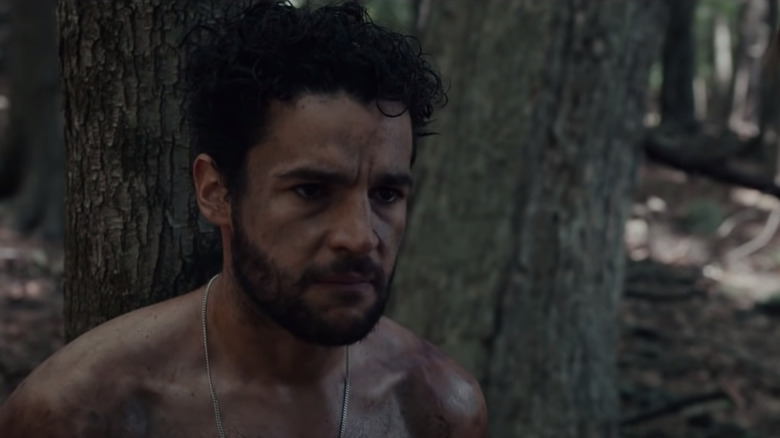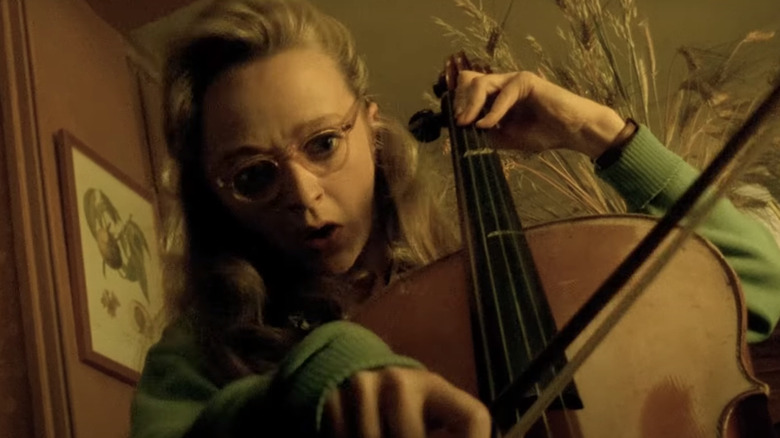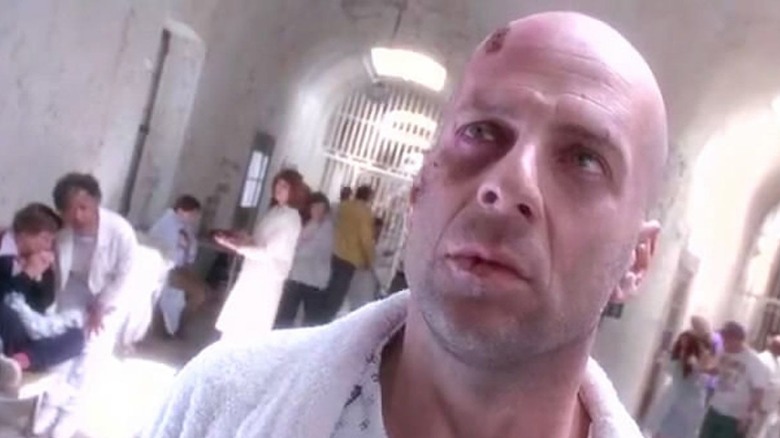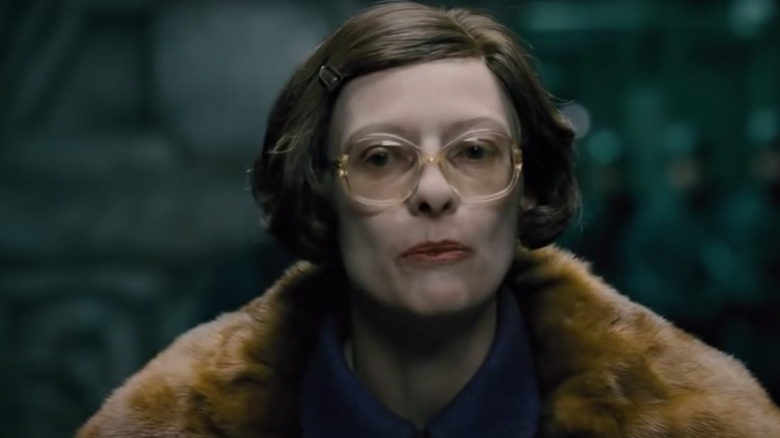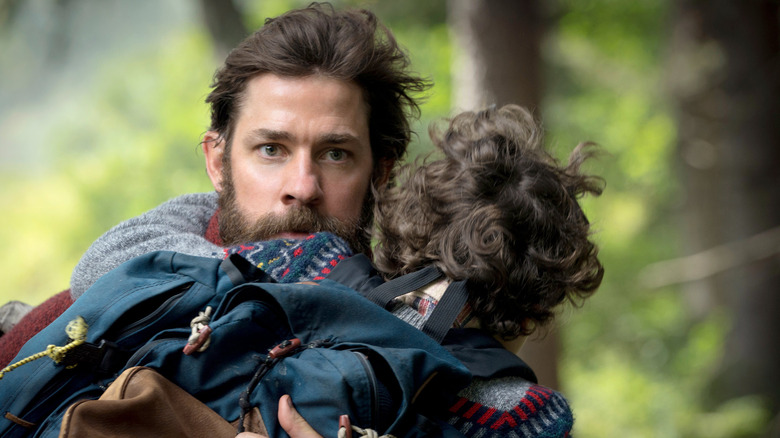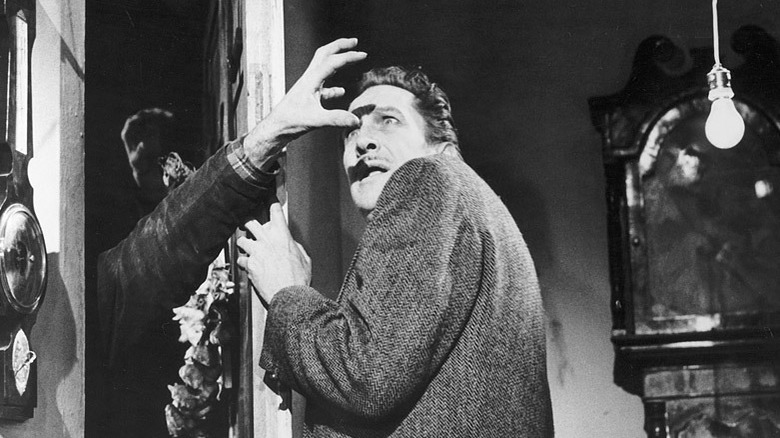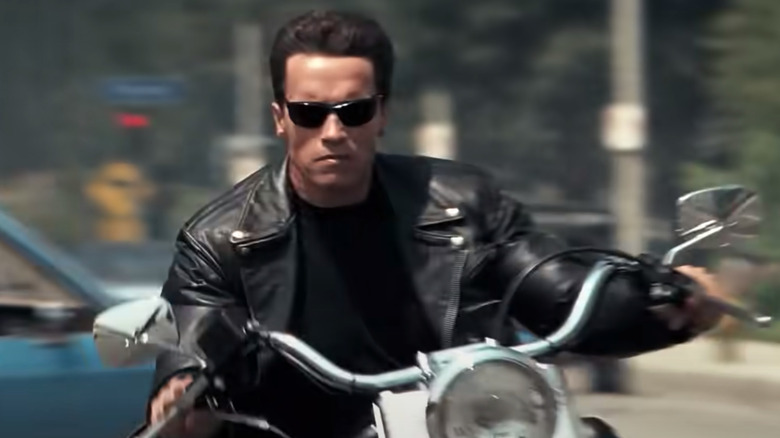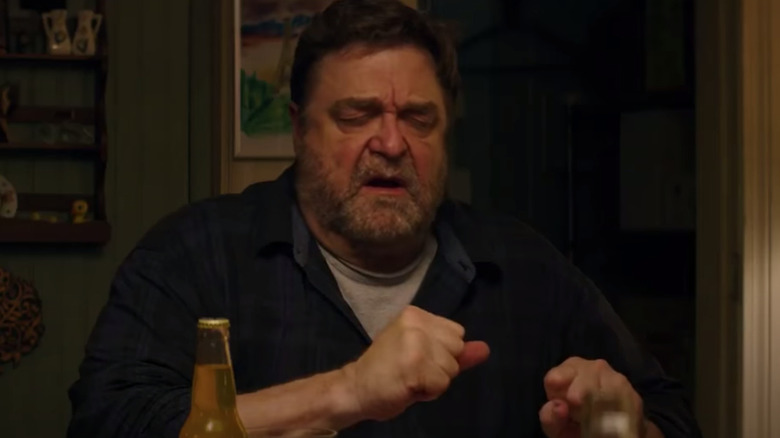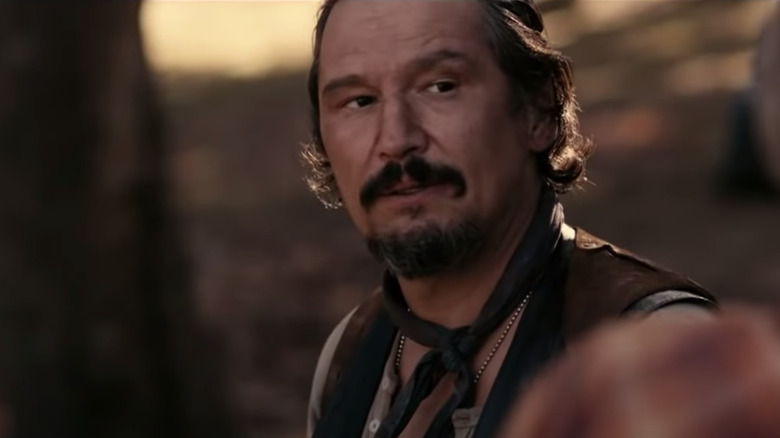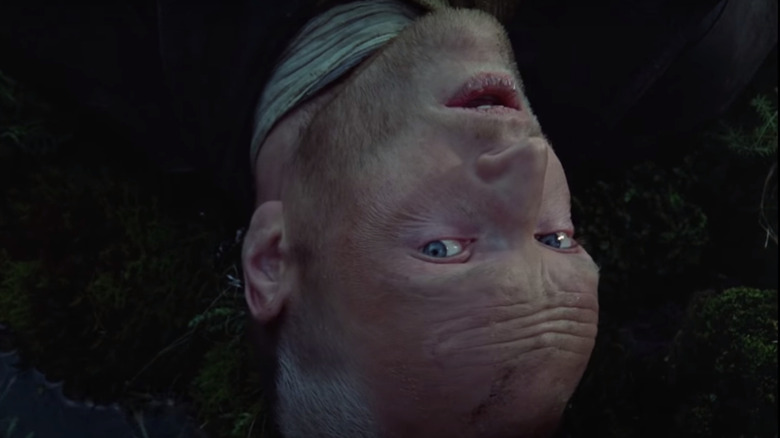25 Movies About The End Of The World You Should Watch Next
For some, movies about the end of the world might hit a little too close to home while dealing with the ongoing COVID-19 pandemic. For others, however, a bit of post-apocalyptic entertainment can serve as some much needed escapism into a reality worse off than our own. Whether you are looking for a break from reality or just seeking an entertaining movie about the end of the world without any thought paid to possible real-life parallels, there are plenty of great options out there.
From zombie outbreaks to nuclear war, from barren wastelands to frozen planets, these movies all present worlds that once looked like ours but have now drastically changed and function by different rules. Nobody is safe in these post-apocalyptic stories. Each of these films either showcases the world ending or is set far into the apocalypse, long after civilized society has crumbled. Without further ado, here are 25 worthwhile options for your next post-apocalyptic movie night.
The Road
A bleak and realistic look at a post-apocalyptic future, 2009's "The Road" is a faithful adaptation of the Cormac McCarthy novel of the same name published three years earlier. Viggo Mortensen and Kodi Smit-McPhee star as a father and his young son attempting to cross the barren wasteland of what used to be the United States to reach the coast, not knowing if anything worthwhile awaits them there. The production design and locations chosen for the film result in one of the best-looking post-apocalyptic landscapes found in any end-of-the-world movie. Though none of the characters have names, the supporting cast of "The Road" is packed with stars in small roles, including Charlize Theron, Michael K. Williams, Garrett Dillahunt, Robert Duvall, and Guy Pearce.
The story of "The Road" is straightforward, but full of thematic subtext and thought-provoking questions about humanity and life both before and after the end of the world. The original score composed by Nick Cave and Warren Ellis is a thing of beauty that adds greatly to the overall experience of the film. The director, John Hillcoat, has worked a great deal with Cave and Ellis throughout his career. Hillcoat has directed music videos for their band, Nick Cave and the Bad Seeds, and directed two Westerns written by Cave and scored by Cave and Ellis: "The Proposition" and "Lawless."
The Rover
"The Rover" is a 2014 post-apocalyptic film set in the hot and dusty Australian outback. The film was written and directed by David Michôd and based on a story by actor and filmmaker Joel Edgerton. The two worked together again in a similar capacity for 2019's "The King." Guy Pearce plays a rugged brute with just one straightforward objective: to recover his stolen car. Robert Pattinson gives a great performance as the filthy and possibly mentally challenged brother of one of the car thieves who winds up captured by Pearce. "The Rover" was Pattinson's first film following the end of the "Twilight" series that rocketed him to stardom, and the attempt to distance himself from the "pretty boy" persona he had accrued is clear and effective.
The setting of post-apocalyptic Australia might bring the "Mad Max" franchise to mind, but "The Rover" is no copycat. The film is set a full decade past the collapse of society and includes plenty of colorful details about the ways in which the world has changed, while keeping a realistic, dark tone. The story is on the more simplistic side, but the performances, setting, and world-building are all great, and the film is punctuated by brutal bursts of violence.
Invasion of the Body Snatchers
There are two distinct versions of "Invasion of the Body Snatchers" that are both worth watching; one from 1956 and one from 1978. The two tellings have myriad differences and each have their own strengths, but the late '70s remake surprisingly comes out on top as the more dynamic and exciting movie. "Invasion of the Body Snatchers" is not set far off in a ruined future like the previous two films on this list, but rather it shows the world beginning to fall apart as alien seeds fall from outer space and begin taking over humanity at an exponential rate. This end-of-the-world story blends together science fiction and horror elements to great effect.
Donald Sutherland, Leonard Nimoy, Jeff Goldblum, Veronica Cartwright, and Brooke Adams all star as a group of San Francisco residents frantically attempting to figure out what is happening and how to survive it. The special effects for the "pod people" look gross and great in equal measure, and the film's iconic ending, with Sutherland pointing and screaming, is unforgettable.
Mad Max: Fury Road
If you are only going to watch one "Mad Max" movie, make it "Fury Road." Although "The Road Warrior" is also excellent, the latest "Mad Max" film instantly became the best of the series. After making the first three films in the series between 1979 and 1985, director George Miller left the franchise behind for 30 years. 2015 saw the glorious return of Mad Max Rockatansky, with Miller again at the helm as the director, producer, and co-writer alongside Brendan McCarthy and Nick Lathouris.
With Tom Hardy filling the lead role previously played by Mel Gibson, Max finds himself captured by Immortan Joe's War Boys and used as a living blood supply. By chance, he gets mixed up in the attempted escape of Immortan Joe's wives led by Imperator Furiosa, played by Charlize Theron. George Miller has more "Mad Max" in the works. One is a prequel exploring Furiosa's origin story, simply titled "Furiosa," and the other is a sequel with Mad Max Rockatansky back at the helm, titled "Mad Max: The Wasteland."
The Book of Eli
"The Book of Eli" is a post-apocalyptic film from 2010 with a heavy emphasis on action. Denzel Washington stars as the titular Eli and commands the screen as a man on a divine mission to transport a bible across the dangerous, devastated wasteland. Mila Kunis plays a large supporting role, and Gary Oldman serves as the film's main villain, a dangerous gang leader named Carnegie. Other supporting roles are filled by the likes of Ray Stevenson, Michael Gambon, Jennifer Beals, musician Tom Waits, and martial artist Lateef Crowder.
The ruins of the post-civilized landscape in "The Book of Eli" look great, even though the world-building at times might feel a little too familiar from various other similar stories. Though there is a large religious component to the film, one does not need to be religious in order to enjoy the science fiction and action elements of the story. "The Book of Eli" was written by Gary Whitta, who would go on to write "Rogue One: A Star Wars Story" and multiple episodes of "Star Wars: Rebels." The film was directed by twin brothers Albert and Allen Hughes, who are best known for directing "Menace II Society" and "Dead Presidents" in the '90s.
28 Days Later
"28 Days Later" is a zombie film from Irish director Danny Boyle. The screenplay was written by Alex Garland, who also wrote the screenplay for Boyle's film "Sunshine" and wrote the novel that was adapted for Boyle's film "The Beach." Garland has gone on to become a director himself, making the movies "Ex Machina" and "Annihilation," as well as the FX television series "Devs."
Cillian Murphy stars as a courier who wakes up from a coma to find himself 28 days into a zombie apocalypse. Technically, they aren't zombies but rather people infected with the "rage virus," but for all intents and purposes, this is a zombie film. Naomie Harris and Brendan Gleeson play survivors who help out the bewildered courier, and Christopher Eccleston has a small but juicy antagonist role in the latter stages of the film as a Major in the now-disorganized military.
The beginning of the film includes a sequence showcasing deserted London landmarks, which was difficult to shoot (via Time Out), but resulted in truly harrowing images of the early stages of the apocalypse. The 2002 film was partially shot with early digital video cameras, resulting in a picture quality lower than the average film. However, the reduced image quality only added to a sense of grunginess and realism that worked in the film's favor. "28 Days Later" is notable for popularizing fast zombies over the slower, shambling type of undead.
The Survivalist
2015's "The Survivalist" is a low-key post-apocalyptic story made in Ireland for a small budget of about £1 million (via Culture Northern Ireland), or approximately $1.4 million. The film is the feature-length directorial debut of writer and director Stephen Fingleton. The story follows a man, played by Martin McCann, who lives a self-sustaining existence in isolation after the world has ended by way of mass starvation. Two women, played by Mia Goth and Olwen Fouéré, arrive in need of food and shelter, challenging his solitary lifestyle.
Fingleton first told a truncated version of this story as a short film titled "Magpie," released one year prior. McCann and Goth both appeared in that rendition of the tale as well. The low budget shows at times, and "The Survivalist" is extremely small in scope, with just the three main characters and a single primary location. The film's reduced scale is especially apparent when compared to other post-apocalyptic sagas, but it makes for a good change of pace if you're looking for an end-of-the-world movie that is drastically different from most others.
Take Shelter
"Take Shelter," from writer and director Jeff Nichols, is the only film on this list that both is and isn't a movie about the end of the world. The story follows a man, played by Michael Shannon, who believes he is having visions of an impending apocalyptic event. Whether the potential disaster that hangs over the film is real or a result of mental illness suffered by the main character is left somewhat open to interpretation. The film unfolds as an emotional, character-driven drama about worry and doubt.
Jessica Chastain gives a great performance as the put-upon wife whose husband is convinced the world is about to end while no one else believes him. Shea Whigham also turns in a strong performance as a friend turned enemy of the family. But this is Michael Shannon's show, and he is phenomenal in the part. Shannon has appeared in all of Jeff Nichols' films in either the lead or a supporting role. "Take Shelter" won three prestigious awards at the 2011 Cannes film festival, including the Critic's Week Grand Prize.
Embers
"Embers" is a smaller and lesser seen movie with a unique spin on the post-apocalyptic genre. In "Embers," rather than a violent and destructive force bringing about the end of the world, it's a neurological disorder instead. The world's capacity for memory has been obliterated. Living in the world of "Embers" is a constant battle with repeating amnesia. Characters awaken with no memory of who they are or what happened to the world and are unable to form new memories that last beyond a brief while.
The story of "Embers" takes a vignette approach with minimal overlap, telling different short plots following different characters all struggling to navigate a world without memory. "Embers" isn't a perfect film — it's rough around the edges and doesn't quite deliver on the scale demanded by its premise — but the sci-fi concept at the heart of the film is such a fresh take on the post-apocalyptic genre that the film is worth a watch in spite of its flaws.
The World's End
"The World's End" is a British combination of sci-fi, action, and comedy about an alien invasion that escalates all the way to, you guessed it, the world ending. The film stars the beloved comedy duo of Simon Pegg and Nick Frost and was directed by Edgar Wright. The three first began working together with the television series "Spaced" in 1999. "The World's End" serves as the final film in the "Cornetto Trilogy," though it tells a self-contained story with different characters from the previous two films, "Shaun of the Dead" and "Hot Fuzz." Pegg co-wrote all three films with Wright.
Pegg and Frost undergo a bit of role reversal for "The World's End," as opposed to their usual straight-man/funny-man dynamic. The rest of the cast is strong as well and includes the likes of Martin Freeman, Paddy Considine, David Bradley, Rosamund Pike, Pierce Brosnan, Michael Smiley, and Eddie Marsan. Wright's direction is stylish and distinctive, the myriad fight scenes against blue-blooded robots are exciting, and the entire film is hilarious. Plus the film has a good dramatic backbone that lingers on the key emotional moments to good effect.
This is the End
"This is the End" is another comedy about the end of the world that was coincidentally released the same year as "The World's End," but the type of apocalypse and the sense of humor are both drastically different. This American comedy is much more crude than its British counterpart and spends far more time exploring the crumbling of the world — or in this case, the rapture.
Though they had written many projects together beforehand, "This is the End" was the first film directed by the creative team of Seth Rogen and Evan Goldberg, whose friendship served as the basis for "Superbad," which they also wrote. The cast of "This is the End" is packed with stars in both large and small roles, and the majority of the cast members play fictionalized versions of themselves. Rogen, Michael Cera, Jay Baruchel, James Franco, Danny McBride, Jonah Hill, Craig Robinson, Emma Watson, Rihanna, Paul Rudd, Channing Tatum, Kevin Hart, Aziz Ansari, and more all play exaggerated and often self-deprecating versions of themselves, often with hilarious results.
Children of Men
"Children of Men" is a fusion of the often-conflated dystopian and post-apocalyptic genres. This 2009 sci-fi drama takes place within a dystopian society that has an expiration date looming on the horizon. The cause of the end of the world this time around is sterility. The year is 2027, and no children have been born in the past 18 years. When a woman becomes pregnant for the first time in nearly two decades, it's up to Theo, played by Clive Owen, to assist a radical activist group in shepherding the pregnant woman to safety at sea. Michael Caine, Chiwetel Ejiofor, and Julianne Moore flesh out the supporting cast.
The story was adapted from the novel of the same name written by author P.D. James. "Children of Men" was directed by Alfonso Cuarón, who also made films like "Gravity," "Roma," and "Y Tu Mamá También." The film was acclaimed for its visual style crafted by Cuarón and the cinematographer Emmanuel Lubezki, who was nominated for the Best Cinematography Oscar for his work. The film was also nominated for the Best Adapted Screenplay and Best Film Editing Oscars as well. The film includes a number of complex and lengthy shots that required deft coordination. Some, like the folks at No Film School, contend that "Children of Men" contains "the perfect long take."
A Boy and His Dog
"A Boy and His Dog" is an absolutely bizarre post-apocalyptic tale from 1975. The novella of the same name written by Harlan Ellison served as the source material for the film, in which a nuclear war between the United States and the Soviets has ravaged the planet and turned it into a desert wasteland. Luckily, before the planet was destroyed, a major scientific breakthrough was made that enabled telepathic communication between humans and genetically engineered animals.
Don Johnson, of later "Miami Vice" fame, stars as Vic, a young man who wanders the wasteland with his telepathic dog, Blood, voiced by Tim McIntire. Jason Robards and Susanne Benton also co-star. The poster proclaims that "A Boy and His Dog" is "an R rated, rather kinky tale of survival," so you know you are in for something a little different than the average post-apocalyptic fare. "A Boy and His Dog" is set in 2024, so we won't have to wait long to find out whether or not nuclear war and telepathic animals are in our future.
Dawn of the Dead
George A. Romero's "Night of the Living Dead" from 1968 was a massively influential horror film that gave birth to the entire zombie genre as we know it today, but it didn't quite cross over into end-of-the-world territory yet. Romero's 1978 follow-up, however, "Dawn of the Dead," did enter apocalyptic territory. With a much larger scope than its predecessor, "Dawn of the Dead" depicts a world completely overrun by the zombie outbreak. A group of charismatic survivors — played by Ken Foree, Scott H. Reiniger, David Emge, and Gaylen Ross — flee the danger of the city and take refuge in a shopping mall, which is itself also overrun by zombies.
With special effects from groundbreaking gore pioneer Tom Savini – who also plays a supporting role in the film as a motorcycle thug named Blades — "Dawn of the Dead" is full of memorable zombie kills, as when a zombie gets a little too close to the blades of a helicopter, or the iconic machete-through-the-head gag. The film is frightening and exciting, but it is also deeply emotional and extremely funny at times as well. What makes it all work are the dynamics between the main cast of characters. This quartet of survivors is so likable that you genuinely want the best for them in this zombie-ridden world.
Day of the Dead
George A. Romero returned to the "Dead" series in 1985 with "Day of the Dead." With a completely different setting and group of characters, this is a sequel only in that it takes place within the same world overrun by zombies. This time around, the setting is Florida, and our group of survivors spends the vast majority of the film hunkered down within underground salt mines that also house a military base and a research laboratory. Though most of the film takes place in this one location, "Day of the Dead" does open with an effective view of the post-apocalyptic landscape of Florida. Streets littered with trash, zombie hordes roving the city, and an alligator crawling down the steps of a municipal building culminate in a brief but sobering glimpse of the ruins of the world up above.
The film's main conflict has more to do with infighting between the human characters than it does with the potential danger of the zombie hordes. It's the military versus the scientists in "Day of the Dead," and there are memorable characters on both sides. "Day of the Dead" also introduces the idea of zombie conditioning as much of the research done by the scientists concerns the mental and physiological study of zombies. The scenes between Bub, the smart zombie, and the optimistic Dr. Logan, nicknamed Frankenstein, offer a much needed glimmer of hope for the future of civilization — only to be dashed by the reckless and impatient military.
It Comes at Night
2017's "It Comes at Night" is a thriller from writer and director Trey Edward Shults, who also made "Waves" and the indie darling "Krisha." "It Comes at Night" suffered from an egregious case of mismarketing. Audiences went into the film expecting a supernatural horror film based off the poster, plot description and trailer, but that isn't quite what "It Comes at Night" is. Even the title, "It Comes at Night," wound up being a bit of misdirection since nothing comes at night in the film other than a handful of nightmare dream sequences, and some viewers were left feeling manipulated and misled by a film that didn't deliver on its promises.
However, if you go into "It Comes at Night" with the right expectations, you will find a tense story about paranoia and trust set in a mysterious post-apocalyptic world. The scope of the film is small and focuses on just a few characters, but this limited scale enables the film to focus on character complexity and thematic exploration. The whole cast turns in good performances, but Joel Edgerton and Christopher Abbott shine especially brightly, and Shults's direction is strong while venturing into drastically different territory from his other two films, which are both grounded dramas.
Delicatessen
"Delicatessen" is a 1991 French film centered around the tenants of an apartment building above a butcher shop in a post-apocalyptic world where food is extremely scarce and doubles as currency. The owner of the butcher shop is also the apartment building's landlord, and when tenants go missing, suspicions of potential cannibalism arise. The film was co-directed by Marc Caro and Jean-Pierre Jeunet, the latter of whom made the highly acclaimed "Amélie." Caro and Jeunet also collaborated on "The City of Lost Children" in 1995.
Those who are familiar with the work of Caro and Jeunet will have an idea as to the visual style to expect from "Delicatessen." The film stands out as unique in the canon of post-apocalyptic cinema and makes extensive use of dark comedy and surrealism. The comedic elements are front and center in "Delicatessen," but the film isn't afraid to get dark at times too.
12 Monkeys
"12 Monkeys," from director and founding Monty Python member Terry Gilliam, was inspired by the 1962 short film "La Jetée" from French documentarian and short filmmaker Chris Marker. While most post-apocalyptic films either showcase the world ending or explore what remains long after the end has come, "12 Monkeys" centers around an attempt to prevent the cataclysm from happening through the use of time travel.
The story follows James Cole, played by Bruce Willis, a convict sent back in time with the mission of preventing a biological terror attack that will lead to the total collapse of society. The prominence placed on science fiction concepts helps set "12 Monkeys" apart from the majority of post-apocalyptic films, and the frozen-over look at the future world wiped out by the virus is distinct and memorable. Brad Pitt has a great supporting role as Jeffrey Goines, a mental hospital patient with his own agenda. "12 Monkeys" was rebooted as a four-season television series on the SyFy network from 2015 to 2018.
Snowpiercer
2013's "Snowpiercer" is set in the distant future after the world has frozen over. Earth's only remaining inhabitants live within a high-tech train that continuously circumnavigates the globe. While the outside world is deathly cold, the interior of the train isn't free from danger either. Those at the back of the train lack all of the comfort and luxury of those at the front in a bit of scathing social commentary on classism — a common thematic focus throughout director Bong Joon-ho's entire body of work.
The story was adapted from a French graphic novel from the 1980s titled "Le Transperceneige." Curtis, played by Chris Evans, leads a band of rebels from the back of the train on a charge up toward the engine car as class warfare breaks out. Ed Harris has a brief but memorable role as the train's creator, Wilford, while Tilda Swinton, Alison Pill, Tómas Lemarquis, and Vlad Ivanov all stand out as his most memorable subordinates. Serving in the resistance alongside Evans are Octavia Spencer, Jamie Bell, and John Hurt, plus a pair of father and daughter third-party wildcards, played by Ko Asung and frequent Bong Joon-ho collaborator Song Kang-ho, who get caught up in the mix. The story of "Snowpiercer" was expanded with a television prequel in 2020 on the TNT network.
A Quiet Place
"A Quiet Place" was a huge hit when it came out in 2018. The film is set in a wholly unique scenario where silence is key. Seemingly invincible monsters that are blind but hunt by sound have decimated the Earth's population. The story follows one family as they attempt to live as normal a life as they can in a world with such drastically altered rules of survival. "A Quiet Place" was directed by John Krasinski, who also co-wrote the script and stars in the lead role alongside his real-life wife, Emily Blunt. Krasinski returned to direct the sequel, "A Quiet Place Part II," as well.
While the film contains a few leaps in logic and potential plot holes, and occasionally feels held back by its PG-13 rating, it also features a number of tense sequences and has excellent sound design. Given how much silence factors into the narrative, a lot of weight rests on the shoulders of the film's post-production sound team, and they absolutely deliver. Not surprisingly, Ethan Van der Ryn and Erik Aadahl were nominated for the Best Sound Editing Oscar for their work on "A Quiet Place."
The Last Man on Earth
"The Last Man on Earth," not to be confused with the unrelated 2015 television series of the same name, is a sci-fi drama from 1964 and the oldest film to make the list. Horror icon Vincent Price stars as Dr. Robert Morgan, the presumed last man on earth who lives a sad and isolated existence in a world gone to ruin. A disease has ravaged earth's population, and scattered collectives of vampires are the only other traces of life aside from Dr. Morgan.
The story was adapted from the Richard Matheson novel "I Am Legend," which was subsequently adapted into the Will Smith-led "I Am Legend" movie from 2007. The same novel also served as the source material for "The Omega Man" starring Charlton Heston in 1971 and "I Am Omega" starring Mark Dacascos, which was released in the same year as the Will Smith adaptation. Though this story has been told many times, the assorted film versions are all quite different from each other. If you have seen the Will Smith or Charlton Heston version of the story, it can still be worthwhile to go back and seek out the first film adaptation, starring the one and only Vincent Price.
Terminator 2: Judgment Day
"Terminator 2: Judgment Day" built upon the already excellent foundation provided by the first "Terminator" film and expanded upon its scope in every area, including the fleeting glimpses at the post-apocalyptic world ravaged by deadly terminators in the future. The film raked in four Oscar wins and was nominated for two additional Academy Awards. James Cameron returns as the director and co-writer for this sequel, which does not play anything safe.
Edward Furlong plays young John Connor, the fated leader of the resistance that will one day wage war against the terminators as humanity's last hope after the Skynet takeover. Linda Hamilton returns as Sarah Connor from the first film, but has undergone a drastic transformation from the first film's hapless damsel in distress to the tough-as-nails psyche ward patient she begins as in the sequel. Arnold Schwarzenegger is back as the T-800 terminator who hunted down Sarah Connor in the original film, but he has switched allegiances from villain to hero as he now protects John Connor from the nearly unstoppable liquid metal of the T-1000, played by Robert Patrick. The characters are iconic, the action is big and exciting, and the film has a lot of humor and heart in all the right places.
10 Cloverfield Lane
2016's "10 Cloverfield Lane" is a part of the loosely connected anthology of "Cloverfield" films, which also includes the original found-footage movie from 2008 and "The Cloverfield Paradox" from 2018. "10 Cloverfield Land" shares very little in common with the other two, and the original script reveals no connection to the others whatsoever. The film was first written as a spec script titled "The Cellar," and was then rewritten to connect to the "Cloverfield" franchise.
The story follows Michelle, played by Mary Elizabeth Winstead, who gets in a car accident and wakes up in an underground bunker owned by the intimidating and marginally unhinged Howard, portrayed by John Goodman. Howard claims that the air outside the bunker has become poisoned after an attack, but Michelle doubts the veracity of his claims. The line between protection and possession blurs within the bunker, and Michelle begins plotting an escape with the help of another captive, Emmett, played by John Gallagher Jr.
This well-made film serves up plenty of intrigue and tension with a small cast and a singular location. The overblown ending that connects the film to the "Cloverfield" universe is a little bit of a misstep, but everything else preceding it is quite strong. "10 Cloverfield Lane" was the feature-length directorial debut of Dan Trachtenberg, who would go on to direct episodes of "Black Mirror" and "The Boys." Damien Chazelle — writer and director of "Whiplash" and "La La Land," among other projects — worked on the screenplay early in his career before making it big, via Indie Wire.
Stake Land
"Stake Land" is an indie film from 2010 made for a low budget of less than $1 million (via IMDb Pro). The world in "Stake Land" is overrun by vampires, and the film leans into both the scares and violence associated with bloodsuckers in the horror genre. The story follows a pair of vampire hunters, one young and inexperienced, and the other a master killer of the undead. The trajectory of their path may feel familiar to fans of the genre as they work their way toward the Canadian border in hopes of finding a safe place referred to as New Eden.
Critics praised "Stake Land" as a refreshing take on the stale vampire genre that knows exactly what it is and leans into its low-budget sensibilities. Nick Damici stars as Mister, the expert vampire hunter shepherding the young Martin, played by Connor Paulo, through the dangerous landscape of post-apocalyptic America. Damici co-wrote the film with director Jim Mickle, who would go on to co-create the Sundance TV series "Hap and Leonard" and the Netflix original series "Sweet Tooth," which saw him return to the post-apocalyptic genre. The world of "Stake Land" grew in 2016 with the release of "Stake Land II: The Stakelander."
Stalker
"Stalker" is Russian filmmaker Andrei Tarkovsky's epic science fiction parable from 1979. Many cinema organizations, such as The British Film Institute, consider Tarkovsky to be "one of cinema's true masters," with films like "Andrei Rublev," "Mirror," "Solaris," and "Nostalghia" to his name. The story concerns a pair of men who follow a guide, known as a stalker, on an excursion into an off-limits area known as "the Zone" in search of a place within called "the Room." This rumored and perhaps mythological room is said to have the power to grant wishes.
The film is unlike the vast majority of post-apocalyptic movies out there. Rather than relying on action and excitement, "Stalker" is a slow-moving and contemplative affair. The terms "poetic" and "high art" are frequently applied to "Stalker," along with the rest of Tarkovsky's oeuvre. The precise meaning of "Stalker" is left open to interpretation, as explored in The Guardian, but most believe "the Zone" to be a representation of the official exclusion zones that surround the irradiated lands near nuclear disaster sites, of which Russia has several.
